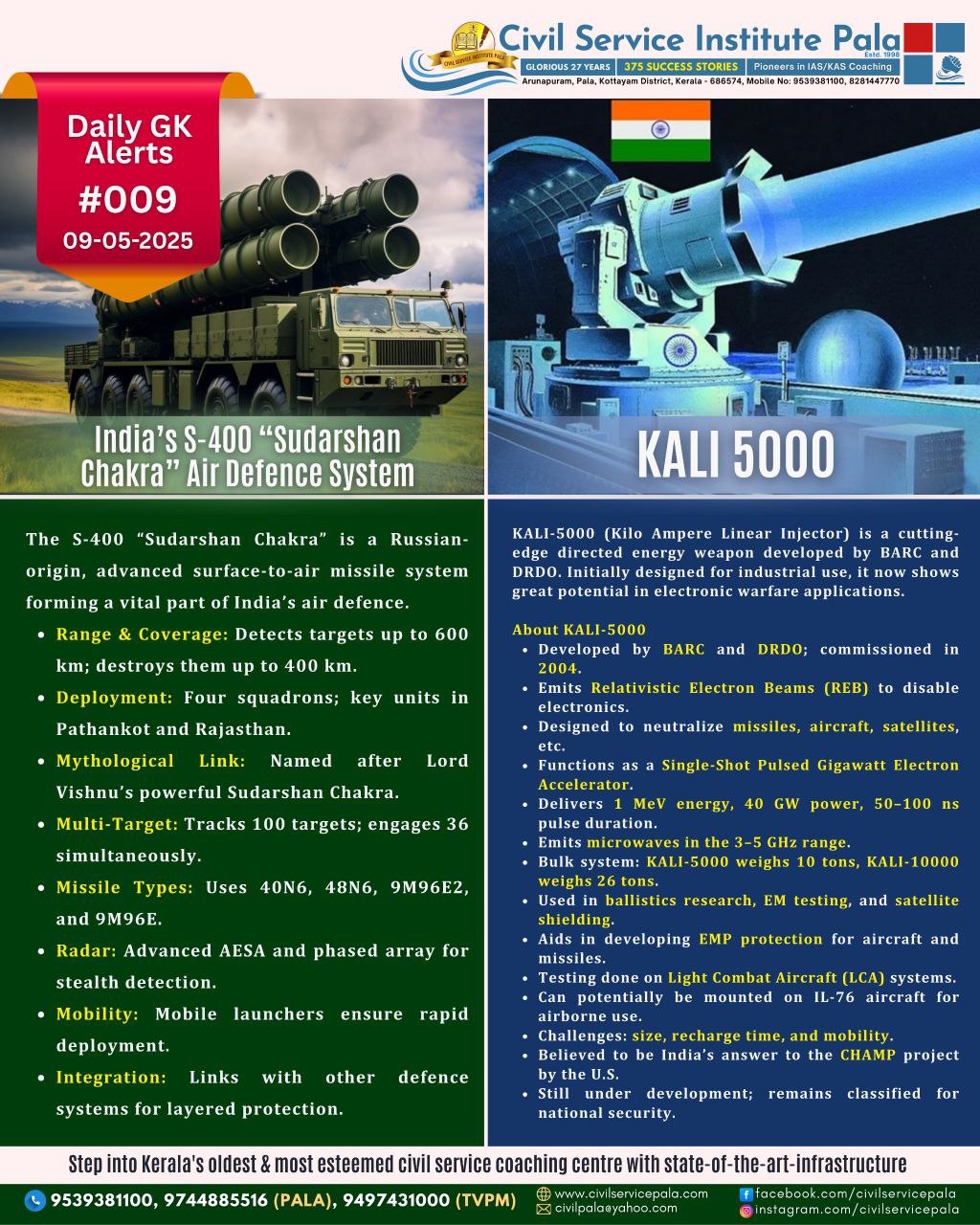
India’s S-400 Missile Defence System: The Sudarshan Chakra of Modern Warfare
India’s national security architecture has seen significant advancements in recent years, with an emphasis on building robust and multi-layered defence systems. One of the most powerful additions to India’s military arsenal is the S-400 Triumf missile defence system, an advanced surface-to-air missile (SAM) system acquired from Russia. Nicknamed the “Sudarshan Chakra” by the Indian military, the S-400 represents a formidable shield against aerial threats, drawing symbolic inspiration from the mythological weapon of Lord Vishnu that annihilates evil with precision and power. With its cutting-edge technology and long-range strike capabilities, the S-400 system strengthens India’s integrated air defence network and acts as a strategic deterrent in the region.
The S-400 system stands out as one of the most sophisticated air defence systems in the world. It can detect aerial targets from a distance of up to 600 kilometres and destroy them at ranges of up to 400 kilometres and altitudes reaching 30 kilometres. This wide coverage ensures the protection of critical infrastructure and airspace from multiple threats including enemy aircraft, drones, cruise missiles, and even ballistic missiles.
India currently possesses four squadrons of the S-400 Sudarshan Chakra. These squadrons are strategically deployed, with one located in Pathankot to safeguard the sensitive borders of Jammu and Kashmir and Punjab, and another positioned to protect vital regions in Rajasthan and Gujarat. Such deployment ensures the rapid neutralization of threats arising from India’s western borders.
One of the key strengths of the S-400 lies in its multi-target tracking and engagement capability. It can track up to 100 aerial targets simultaneously and engage 36 of them at once, allowing a swift and overwhelming response to multiple intrusions. The system is equipped with four different types of missiles—40N6 (400 km), 48N6 (250 km), 9M96E2 (120 km), and 9M96E (40 km)—providing layered and flexible defence against a spectrum of threats.
Another notable feature is its advanced radar technology. The S-400 employs a combination of phased array and Active Electronically Scanned Array (AESA) radars, capable of detecting stealth aircraft and low-flying targets even under heavy electronic countermeasure conditions. Its mobility adds to its strength; being mounted on mobile platforms, the system can be rapidly deployed or relocated, offering both offensive and defensive tactical advantages.
The induction of the S-400 missile system, aptly dubbed “Sudarshan Chakra,” marks a transformative leap in India’s air defence capabilities. Much like the mythological weapon it is named after, the S-400 stands as a symbol of speed, precision, and formidable power. It not only acts as a shield protecting India’s skies but also sends a strong message of deterrence to potential adversaries. As India continues to modernize its military infrastructure, the S-400 plays a crucial role in ensuring strategic dominance and operational preparedness in a complex security environment.



